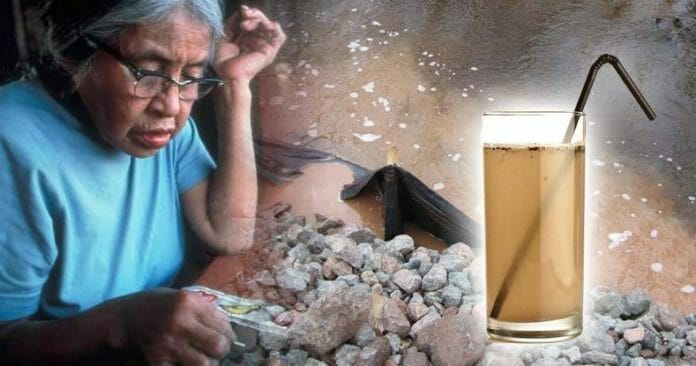The news out of Flint, Michigan brought the issue of contaminated drinking water into sharp focus, as it was revealed that officials at every level—local, state and federal—knew about lead-poisoned water for months but did nothing to address the problem.
Under state-run systems like utilities and roads, poorer communities are the last to receive attention from government plagued by inefficiencies and corrupt politicians. Perhaps no group knows this better than Native Americans, who have been victimized by government for centuries.
In the western U.S., water contamination has been a way of life for many tribes. The advocacy group Clean Up The Mines! describes the situation in Navajo country, which is far worse than in Flint, Michigan.
Since the 1950s, their water has been poisoned by uranium mining to fuel the nuclear industry and the making of atomic bombs for the U.S. military. Coal mining and coal-fired power plants have added to the mix. The latest assault on Navajo water was carried out by the massive toxic spills into the Animas and San Juan rivers when the EPA recklessly attempted to address the abandoned Gold King mine.
“In 2015 the Gold King Mine spill was a wake-up call to address dangers of abandoned mines, but there are currently more than 15,000 toxic uranium mines that remain abandoned throughout the US,” said Charmaine White Face from the South Dakota based organization Defenders of the Black Hills. “For more than 50 years, many of these hazardous sites have been contaminating the land, air, water, and national monuments such as Mt. Rushmore and the Grand Canyon. Each one of these thousands of abandoned uranium mines is a potential Gold King mine disaster with the greater added threat of radioactive pollution. For the sake of our health, air, land, and water, we can’t let that happen.”
There is no comprehensive law requiring cleanup of abandoned uranium mines, meaning corporations and government can walk away from them after exploiting their resources. 75 percent of abandoned uranium mines are on federal and Tribal lands.
Leona Morgan of Diné No Nukes points out one example: “The United Nuclear Corporation mill tailings spill of 1979, north of Churchrock, New Mexico left an immense amount of radioactive contamination that down-streamers, today, are currently receiving in their drinking water. A mostly-Navajo community in Sanders, Arizona has been exposed to twice the legal limit allowable for uranium through their tap.”
Last week, Diné No Nukes participated in protests in Washington, D.C. to raise awareness of past and ongoing contamination of water supplies in the west, which disproportionately affects Indian country.
“The delegation is warning of the toxic legacy caused by […]
Full article: Navajo Water Supply is More Horrific than Flint, But No One Cares Because they’re Native American
More about: Native Americans, First Nations, and treaty rights
More about: water and the U.S. Military
More about: forever chemicals (PFAS, etc.), pollution, and public health


